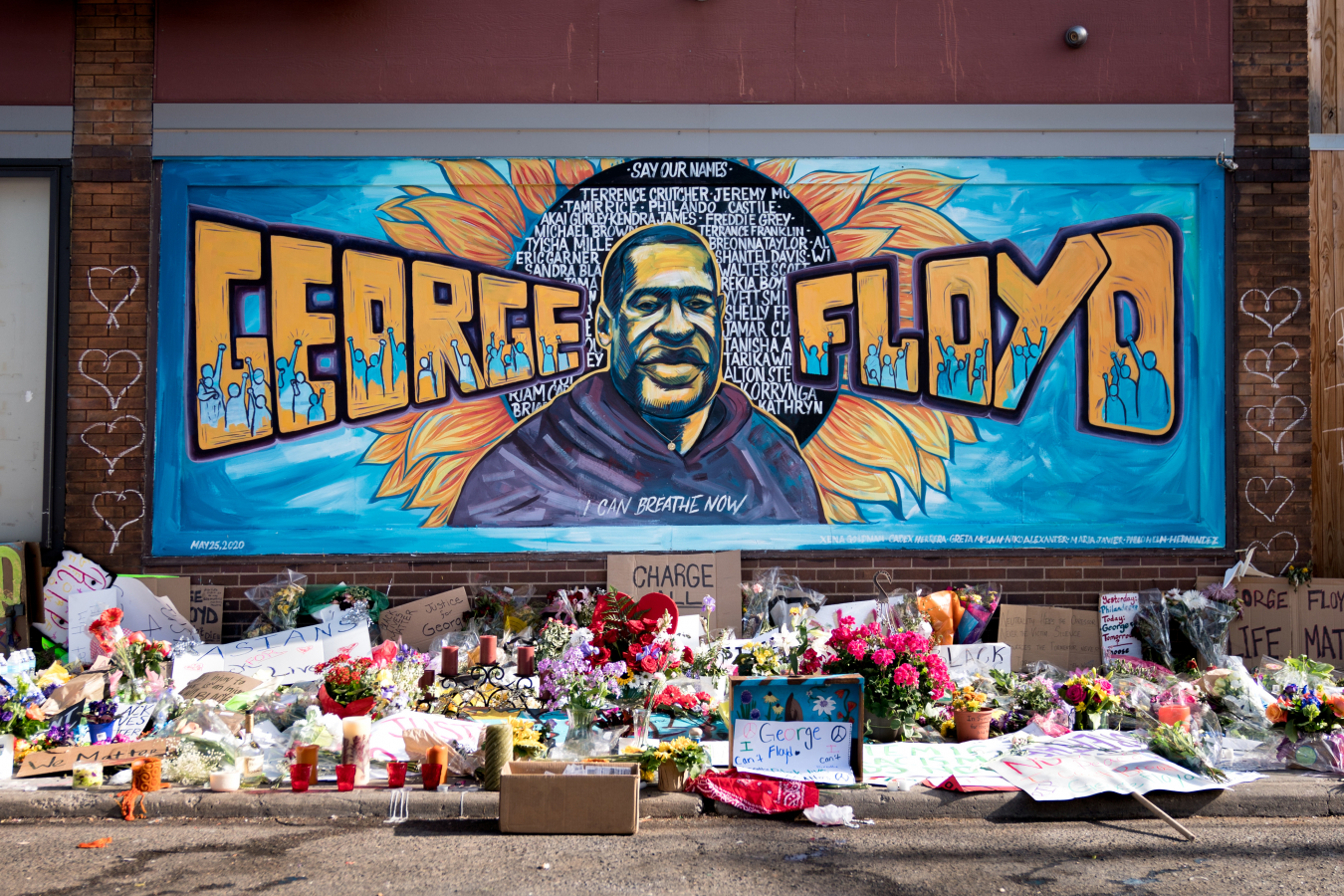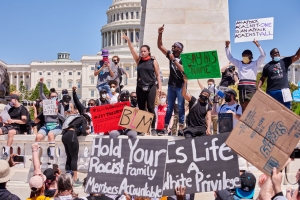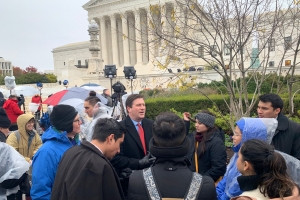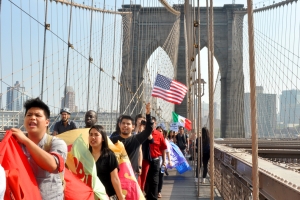Support migrant centric journalism today and donate

Comments by Sanwar Ali:
It is not just in the US that there is a problem. There have been a number of deaths of black people in custody in the UK as well. It seems that in the UK a number of shocking cases have been largely ignored. One case that was mentioned in Novara Media recently is the case of Jimmy Mubenga who died on a British Airways deportation flight to Angola in front of more than a hundred people. Like in the Floyd and Eric Garner case he said "I can't breath".
What happened to Mubenga is similar to the Floyd case. One passenger said a G4S guard, one of three deporting Mubenga to Angola, “had his knee pressed against the deportee for about ten minutes”. A Flight attendant Louise Graham said that after she mentioned her concerns to the Captain he said that Mubenga was “faking it”, and joked that he may have attended RADA (the famous drama school).
There have been a number of other concerns about bias and discrimination in the Justice System in the UK. In fact, even Judges from BAME (Black, Asian, and minority ethnic) groups are suing the Ministry of Justice in the Employment Tribunal alleging racial discrimination, including Judge and Human Rights Lawyer Peter Herbert OBE.
It also seems to be the case that more and more professional regulators in the UK are being taken to the Employment Tribunal and facing discrimination claims following the ruling in the Dr Michalak case in the Supreme Court. A number of BAME professionals have suffered rude, abusive, and discriminatory behaviour at the hands of regulators. Perhaps the concerns of professional people from minority groups can more easily be ignored. Professionals do not tend to riot and often suffer in silence in case complaints about mistreatment will lead to more abusive behaviour and victimisation from regulators of one of the professions.
Amid civil unrest across America, following the death of Afro-American George Floyd at the hands of a white police officer in Minneapolis, US Immigration and Customs Enforcement (ICE) and Customs and Border Protection (CBP) are deploying staff and resources across the country to assist local, state and federal law enforcement in dispersing protesters.
Mr Floyd, a 46-year-old black man, died on May 25 after being pinned down by Minneapolis police officers, one of whom knelt on his neck. An independent post-mortem examination ordered by his family, revealed that Mr Floyd died of asphyxiation.
Graphic images and video footage showing Mr Floyd’s final moments have spread worldwide. The officer captured pinning Floyd to the ground by kneeling on his neck now faces charges of third degree murder and manslaughter.
America unravels
In recent days, the world has watched America unravel as public outrage led to mass unrest across the country. Violent protests have seen local, state and federal law enforcement officers in the line of fire with ugly scenes emerging across several states.
Protesters recently clashed with police and US secret service agents outside the White House as tensions mount. Trump’s response to rioters at his gates was to threaten them with ‘vicious dogs’ and ‘ominous weapons’, which served to spark further public fury.
ICE and CBP called in
Mounting tensions on the streets of many US cities has prompted the Trump administration to call in ICE and CBP, with the Department of Homeland Security confirming that staff and resources from both agencies would be deployed.
ICE spokeswoman, Danielle Bennett, said: “ICE fully respects the rights of all people to peacefully express their opinions.”
“However, in light of civil unrest taking place across the country, ICE personnel and Special Response Teams have been deployed to protect agency facilities and assets in support of the Federal Protective Service and assist local, state and federal law enforcement partners, as needed,” Bennett added.
With protests spiralling out of control, state and local police across the country, plus some National Guard units, have applied greater force in order to regain control and disperse protesters.
Amid ICE’s involvement in helping to restore order, Bennett said: “ICE policy limiting immigration enforcement at sensitive locations such as protests, hospitals and schools, except when there is an imminent public safety or national security threat, will remain in effect.”
CBP’s acting Commissioner, Mark Morgan, tweeted: “CBP continues to assist our law enforcement partners in supporting peaceful protests. However, as we’ve seen, these ‘protests’ are anything but peaceful.”
Protests escalate
On May 29, as protests in Minneapolis grew increasingly aggressive, CBP notified congressional staff via email that one of its surveillance drones had been ‘preparing to show live footage to assist situational awareness at the request of federal law enforcement in Minneapolis.’
Although ICE and CBP agents have been deployed, neither agency has disclosed how many of its staff are in the field helping local, state and federal law enforcement. It’s also unclear how their deployment will affect their normal US immigration duties.
CBP spokeswoman, Stephanie Malin, said: “It would not be appropriate to disclose law enforcement operational specifics which could jeopardize operational security. This deployment is about supporting the efforts of our federal, state and local partners, not about carrying out CBP’s immigration enforcement mission.”
However, the American Civil Liberties Union (ACLU) has voiced concerns over CBP’s involvement, arguing that the agency has a history of ‘using excessive force and civil rights abuses.’
Shaw Drake, policy counsel at the ACLU Border Rights Center, said: “Our main concern is that CBP is the largest and least accountable law enforcement agency in the country and they have a long track record of abuse.”
“Putting the agency into an already tense mix of angry protesters and militarized police forces is a real recipe for further disaster,” Drake added.
Immigrant advocates bemoan ICE and CBP involvement
Immigrant advocates have long been criticizing ICE and CBP’s lack of accountability, even before Trump took office. However, they have slammed the Trump administration for giving both agencies greater freedom to operate without accountability.
Executive director of the National Immigrant Justice Center, Mary Meg McCarthy, said: “As we support those across the country who are protesting violations of human rights at the hands of police and other government actors, we also condemn the Trump administration’s use of the Department of Homeland Security, including Customs and Border Protection officers and equipment, to surveil protests and militarize cities around the country in recent days.”





















